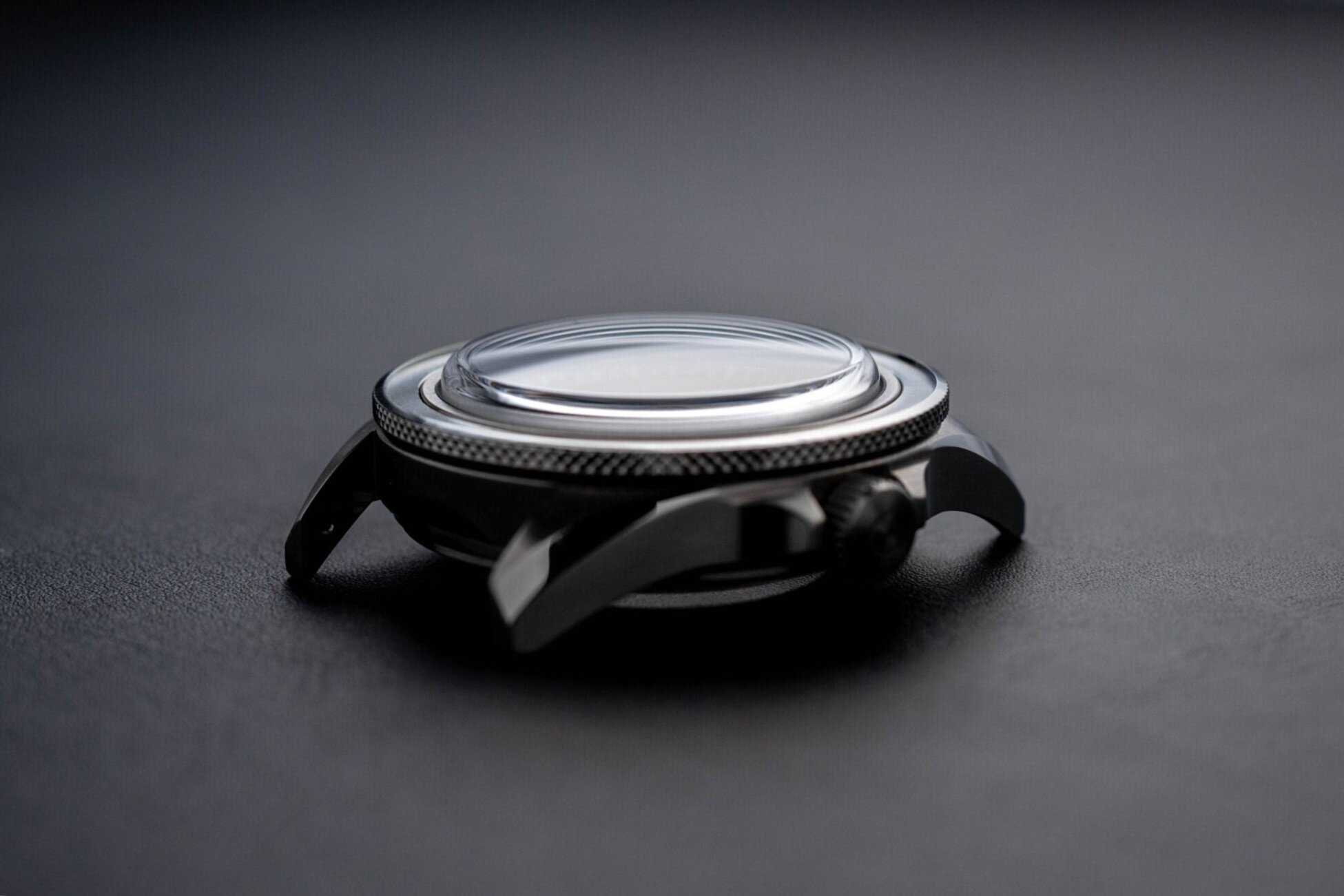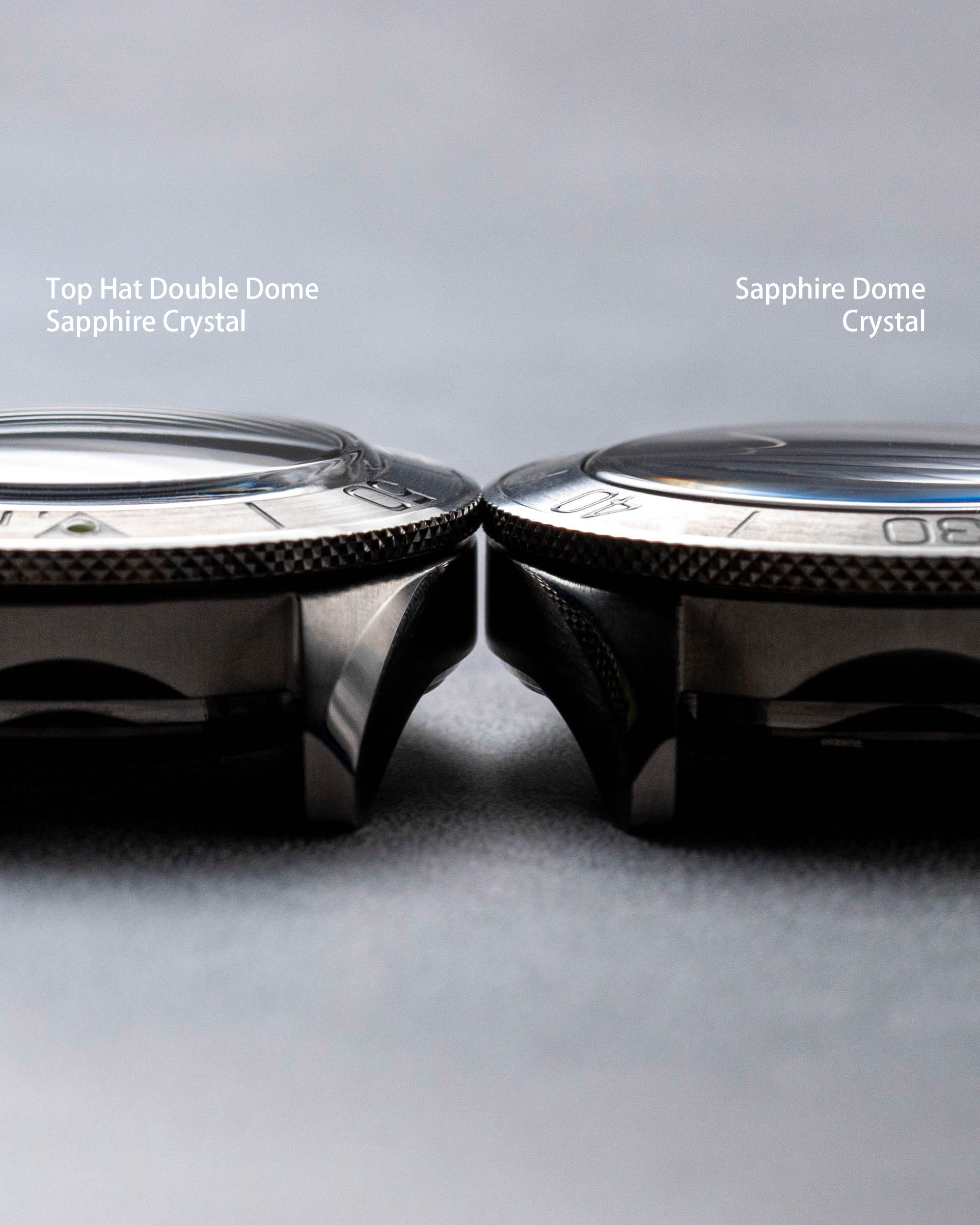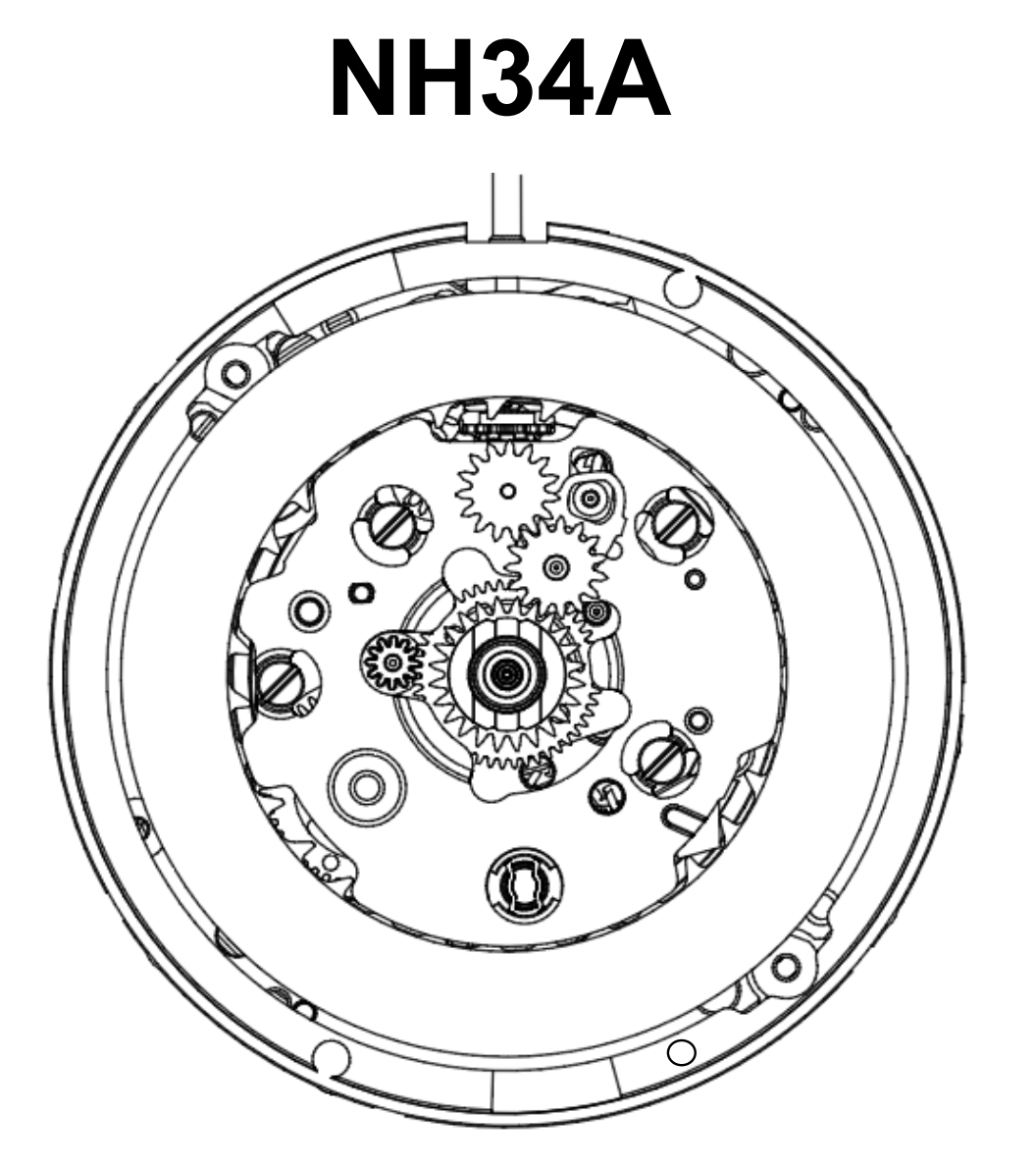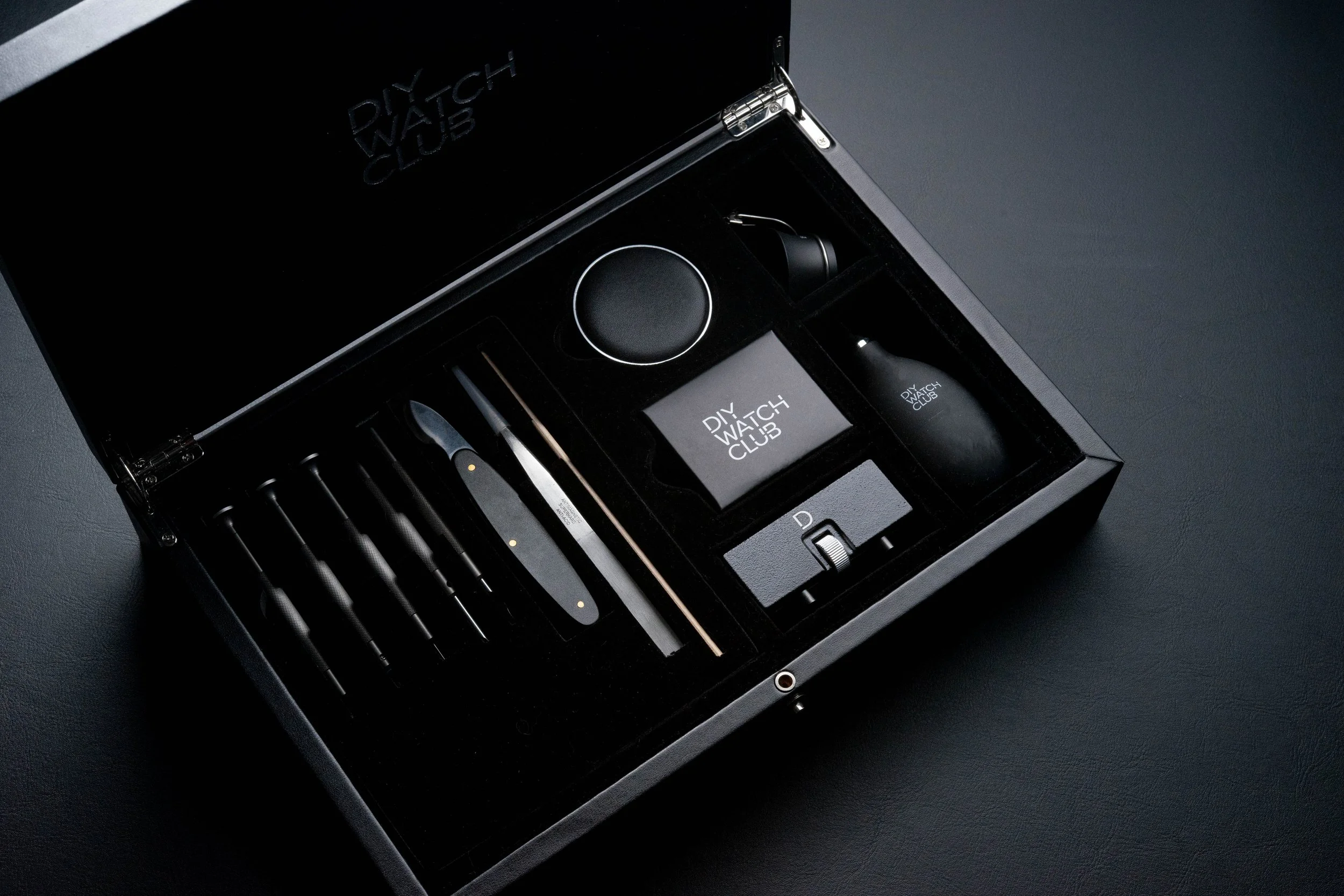What is Top Hat Sapphire Crystal
The history behind top hat crystal
The unique profile of a top hat crystal
Top Hat Crystal? What’s that?
Top hat crystal refers to a style of crystal where the crystal has extra thickness that goes beyond the case, with a rounded edge. It offers a unique profile, with a crystal that goes beyond the case substantially. Its low-high-low silhouette thus resembles that of a top hat. The way its tall edge catches light is nothing less than amazing. Looking from the side, it’s a glowing ring of light; from the front, a halo of milky white that surrounds the dial.
But this type of crystal does not come out of nowhere. In fact, it has its root in the history of dive watch. Let’s examine that.
History of Top Hat Crystal
The publicity for the original Blancpain Fifty Fathoms: “It’s a fine, precision diving instrument praised by frogmen of the world’s great navies!”
The top hat crystal has a special place in the dive watch community. For the first timer, the top hat crystal may look quirky, as it is substantially thicker than the rest of the case. But for experienced, it is an emblem of the golden era of dive watch. To understand top hat crystal, we have to take a trip back in time.
It’s the 50’s. WWII has just ended a few years ago. A glut of diving tech that was necessitated by the war has nowhere to go. So we have this new fad called scuba diving that’s catching on pretty well (SCUBA is actually an acronym for "self-contained underwater breathing apparatus"). It was no longer military frogmen who can dive deep into the sea, but the common folks as well. And these people need a dive watch to go with their new found hobby. So came the first ever dive watch in Blancpain’s Fifty Fathoms.
The Fifty Fathoms was such a functional watch, that when it hit the market in 1953, it was sold in diving shops rather than in jewelry boutiques. What makes it a true diver’s watch is its collection of functional features: unidirectional bezel, lume dial markers, automatic movement (to reduce need for manual winding in water), double crown gaskets (because Rolex patented screw down crown), and you guessed it, top hat crystal. This list of features has remained largely unchanged for the majority of dive watch that came out in the 60’s.
Now you may ask, what does top hat crystal have to do with diving? You see, a measurement of water resistance is how much pressure the crystal can take before it bends too much. Picture pressure as an invisible finger pressing very hard onto the crystal, and if the crystal warps too much, there will be gaps between the crystal and the case, and water leaks into the watch. Now, in 50’s to 60’s, crystals are mostly made with acrylic, which is not very hard. Having a soft material means you need extra thickness to compensate for the strength needed. But that extra thickness cannot go into the watch, because there are hands. So the only way to go is outward. This creates the distinct look of a top hat crystal. The extra thickness that goes beyond the case is also good for marketing — there is no better way to showcase the water resistance capability than seeing the extra crystal on top. Thick crystal = Water resistant. It’s that simple.
First sapphire crystal
Fast forward a decade, we start to see crystal being made by a better material in sapphire, with Rolex ref. 5100 introduced in 1970, Rado Diastar in 1971 and AP Royal Oak in 1972. They are not the first watch ever to have a sapphire crystal; that title belongs to the Jaeger LeCoultre Duoplan from way back in 1929. These watches are significant, however, as they mark the first wave of many watches to be equipped with sapphire crystal.
This is made possible by an improvement in manufacturing synthetic sapphire, which can be now “grown” in industrial settings. This in turn allows for both production in larger scale, and a reduction of impurity and defects, which are unavoidable in natural sapphire. Sapphire crystal can now be made with an affordable cost and more reliable quality.
The switch from acrylic to sapphire makes possible a crystal that is thinner but keeps the same strength. Sapphire is a very hard material, with a Mohs scale of 9 (while diamond is 10). So you can use less material but still retain the same WR capability. But we’re not yet at having top hat sapphire crystal.
Difference between top hat sapphire crystal and normal sapphire crystal
Notice the difference in height between top hat crystal and dome crystal
Due to its hardness, shaping sapphire crystal is a difficult task. That’s why most early sapphire crystals are flat for ease of production. Domed crystals are difficult to make as you need to maintain a perfect curvature and remove more materials. But as with everything, improvement in technology makes it an easier task now.
Nowadays, top hat sapphire crystal can be readily manufactured. It carries the same form factor as the vintage top hat — extra thickness with rounded edge. Of note here is the fact that sapphire crystal is more transparent than acrylic crystal. So not only do you get an improvement of strength over the vintage version, but an improvement of clarity as well.
A common confusion is between top hat crystal and dome crystal. Both feature a certain degree of curvature. But the difference can be easily discerned from the side: a top hat crystal’s edge rises prominently from the case, while that of a domed crystal flows smoothly from the case.
So should you choose top hat sapphire crystal?
So that’s top hat sapphire crystal: a vintage look with modern engineering. It might not be everyone’s cup of tea, but it shows an appreciation of the history of dive watch. Give it a try, you might be surprised by how good it looks on your watch!













Blued hands and screws are ubiquitous existences in the history of watchmaking. Behind that frequent appearance though is a history and science that go beyond the aesthetic value of flame bluing.